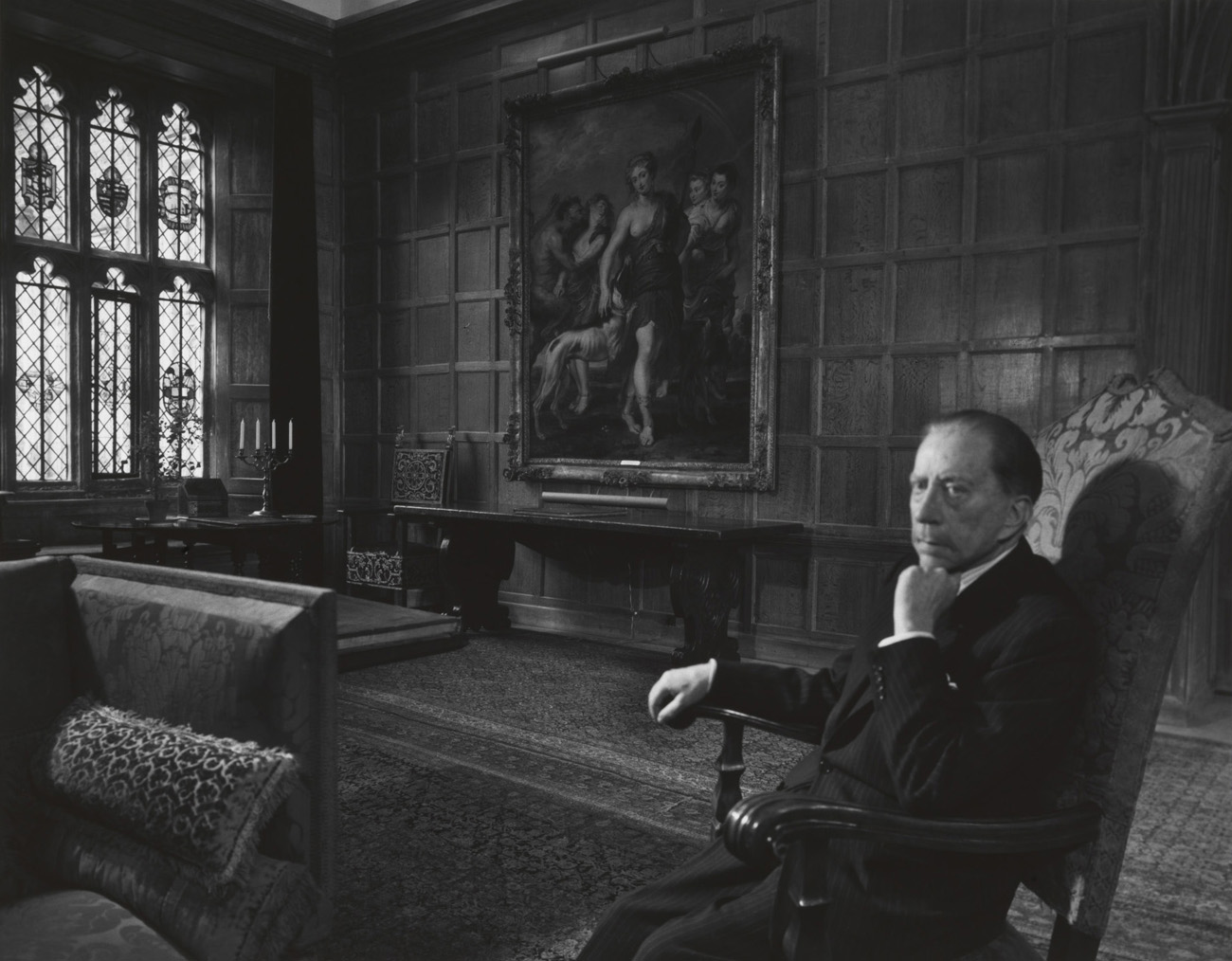Welcome to our deep dive into the Getty Images photo library, an extensive collection that has revolutionized the way we access and use images. Whether you're a content creator, marketer, or just love photography, understanding where these images come from can help you make the most of this valuable resource. In this blog, we’ll explore what Getty Images is all about, its origins, and how its collection has evolved over the years. Ready to jump in? Let’s go!
The Historical Background of Getty Images

Getty Images has an intriguing history that speaks to the evolution of visual media. Founded in 1995 by Mark Getty and Jonathan Klein, the company was born out of a desire to make quality stock photography accessible to a broader audience. Before Getty Images, acquiring high-quality images was often a tedious process involving brokers and local photographers. The founders aimed to streamline this experience.
Here are some key milestones in Getty Images' journey:
- 1995: Getty Images is officially launched. The founders quickly made a name for themselves by offering a wide range of high-quality images online.
- 1999: Getty Images goes public, significantly increasing its visibility and resources to expand its collection and services.
- 2002: The company acquires the Photodisc photo library, which was a game changer in increasing the variety of images available to clients.
- 2004: Getty Images broadens its offerings further by acquiring iStockphoto, paving the way for affordable stock images targeting individual creators and businesses alike.
- 2012: In response to the rise of social media, Getty Images begins to offer free images for non-commercial use, acknowledging the need for more accessible visual content.
- 2016: The company embraces the challenges posed by image copyright and leads the way in developing licensing models to ensure photographers are compensated fairly.
From these early days, Getty Images has fundamentally shaped how we view and use images in the digital age. Today, the platform hosts millions of images, ranging from stock photos and illustrations to video clips and sound bites, all available over numerous subscription models and licenses. This extensive library allows anyone—from large corporations to small businesses—to find the right image that captures the essence of their brand or project.
Moreover, Getty Images has established itself as a key player in promoting creative rights, ensuring that artists receive due recognition and payment for their work. This commitment is crucial in an era where image theft and misuse are rampant.
In summary, the historical journey of Getty Images is not just about growth but also about adapting to the evolving landscape of digital media. As we continue to rely on visual communication in our daily lives, Getty Images remains at the forefront, providing a wide array of resources that cater to our diverse needs. So, whether you’re looking for the perfect stock image or trying to understand the implications of using one, this platform's rich history can guide you through the process!
Also Read This: How to Sell on Getty Images: A Step-by-Step Guide for Photographers
3. Types of Images Available in Getty's Library

If you’re diving into the vast ocean of Getty Images, you’ll quickly discover a treasure trove of visual content just waiting to be explored. Getty Images houses a diverse array of photography styles and types, catering to every conceivable need. Let’s break down some of the categories you can expect to encounter:
- Editorial Images: These images are perfect for news articles, stories, and documentaries. They capture real-life events, public figures, and breaking news, making them ideal for media outlets.
- Creative Images: Looking for something a bit more stylized? Creative images cover everything from fashion editorial shots to artistic portraits, and are often curated to evoke specific themes or emotions.
- Stock Photos: Perhaps the most well-known category, stock photos are versatile images that can be used for a million things – from marketing campaigns to social media. They often depict common scenarios and concepts, making them easy to relate to.
- Video Content: Getty's library isn't just limited to photos! They offer a range of video clips and animations that can help bring your project to life with dynamic visuals.
- Illustrations and Vectors: For those who need something beyond photography, Getty also provides illustrations and vector graphics that can be used in various designs and projects.
Furthermore, Getty Images continuously updates its library with images from both seasoned professionals and emerging photographers. This means you’ll always find fresh and trending visuals that keep up with current styles and cultural waves!
So, whether you’re a content creator, marketer, or designer, Getty Images provides a vast and rich pool of visuals that can elevate your projects, ensuring you find exactly what you need—be it a stunning landscape or a candid moment.
Also Read This: Understanding Getty’s Workforce and Operations
4. How Getty Images Sources Its Photos

Now that you know about the types of images available, let’s delve into how Getty Images sources its extensive library. The process is quite fascinating and strategic, ensuring a diverse and high-quality collection:
Getty Images employs a multi-faceted approach to acquire images, which can be summed up in a few key methods:
- Partnerships with Photographers: Getty works directly with talented photographers and artists from around the globe. These partnerships often allow photographers to license their work through Getty, giving them a platform to reach a broader audience while providing Getty a unique and diverse selection of images.
- Submissions from Contributors: Getty invites photographers to submit their work through a contributor program. Selected submissions are added to the library, which means Getty continually refreshes its collection with new perspectives and styles from independent creators.
- Special Collections: Over the years, Getty has built up exclusive collections through collaborations with renowned photography agencies and archives. These special collections help to ensure that you can find legacy images some may not see elsewhere.
- In-House Photography: Getty also engages in its own photo shoots, specifically curating content that aligns with current trends, themes, or events. This can involve setting up shoots for specific campaigns or acquiring footage during significant events.
This multifaceted sourcing strategy not only enriches the library with a breadth of content but also supports photographers and ensures that the images are varied, authentic, and of the highest quality. By embracing the talents of independent artists while also investing in curated content, Getty Images keeps its collection vibrant and relevant. So next time you browse the library, remember it’s not just a sea of images but a community of artists and professionals working together to create stunning visual storytelling!
Also Read This: Understanding Earnings Potential on Adobe Stock
5. Collaborations with Photographers and Creators
One of the most intriguing aspects of Getty Images is its commitment to fostering a vibrant community of photographers and creators. This collaboration not only enhances the richness of their photo library but also empowers individual artists to showcase their work on a global platform. So, how does this collaboration work, and why is it essential for both Getty Images and the creators involved?
Getty Images often partners with photographers, illustrators, and videographers, ranging from established professionals to emerging talent. This approach helps ensure a diverse array of visual content that caters to a wide variety of audiences. Here are some key points about these collaborations:
- Inclusive Opportunities: Getty seeks to include creators from various backgrounds and niches. By working with a diverse range of contributors, they can provide clients with unique perspectives and specialized images that might otherwise be overlooked.
- Quality Control: Getty Images focuses on maintaining high standards in visual content. Collaborators are often selected based on the quality of their work, ensuring that only the best images make it into their library.
- Revenue Sharing: Contributors benefit financially from their work being licensed through Getty Images. This revenue-sharing model incentivizes creators to produce high-quality, relevant content that not only appeals to buyers but also showcases their talent.
- Global Exposure: Photographers and artists can gain substantial visibility through Getty's global platform. Their works are presented to leading brands, media outlets, and marketers, which can lead to further opportunities beyond just selling images.
- Creative Projects: Getty also collaborates with artists on specific projects, offering them a stage to express their creativity. These projects can introduce new styles and themes to the library, keeping content fresh and engaging.
In a world where visual storytelling has become essential, these collaborations play a crucial role in enriching the Getty Images library. As a result, both the contributing photographers and the end-users benefit from compelling, high-quality imagery that tells vivid stories.
Also Read This: How to Be a Contributor to Getty Images: A Simple Guide to Starting as a Contributor
6. Licensing Models and Usage Rights
Understanding licensing models and usage rights is vital when navigating the Getty Images photo library. After all, if you're using images for commercial purposes, knowing how and when you can use them can save you from legal headaches down the road. Let’s break down the primary licensing models Getty offers and the key points you should consider.
Getty Images primarily operates on two licensing models:
- Royalty-Free (RF): This model allows buyers to pay a one-time fee to use an image in multiple projects without additional royalties. It's often the preferred choice for businesses needing flexibility in usage.
- Rights-Managed (RM): Rights-managed licenses are more complex and specific. In this model, the usage rights are based on factors like the intended use, duration, geography, and exclusivity. If you go this route, it's critical to understand that the cost may vary significantly based on these parameters.
Aside from the basic models, here are some essential points regarding usage rights when working with Getty Images:
- Scope of Use: Always be clear about how you intend to use the images. Licensing agreements will specify whether the images are meant for online, print, advertising, or other purposes.
- Attribution: Some licenses may require you to attribute the photographer or Getty Images in your publications or projects. Failing to do so can lead to potential legal issues.
- Restrictions: Certain usages may be prohibited, such as reselling the images or using them in a way that suggests endorsement or affiliation without permission.
By understanding these licensing models and their accompanying rights, you can make informed decisions that not only contribute to ethical image use but also allow you to create stunning content without running afoul of legal pitfalls. With a wealth of high-quality imagery at your fingertips, the possibilities for your projects are nearly limitless! Just remember to respect the rights of the creators behind the lens.
Also Read This: How to Sell Photos Through Getty Images: A Comprehensive Guide to Selling Your Work
7. The Role of Technology in Image Sourcing
In today’s highly digital world, technology is reshaping the way we source images, and Getty Images is at the forefront of this evolution. From advanced search algorithms to artificial intelligence, the tools available for navigating vast photo libraries are more sophisticated than ever. But how exactly does technology play a pivotal role in enhancing the image sourcing experience?
First off, let’s talk about algorithmic searching. With millions of images available, finding the right one can feel daunting. Getty Images employs robust search algorithms that analyze keywords, tags, and even the visual content of images. This means that when you enter a query, the platform doesn’t just look for matching tags; it understands nuances and context to offer relevant results that resonate with your needs.
Moreover, technology facilitates the use of machine learning. Over time, these systems learn from user behavior – which images are clicked, which ones are downloaded, and which ones are ignored. This allows the platform to refine its suggestions, enhancing the user experience significantly. For instance, if you frequently search for nature photography, the platform will adapt to prioritize similar images in future results.
Additionally, Getty Images has embraced visual recognition technology. This innovative approach allows for the identification of elements within an image, such as colors, themes, and even emotions depicted. This capability means users can now upload an image to find similar styles, creating a more intuitive way to discover the perfect image.
Finally, let’s not forget about cloud storage and access. Modern technology enables seamless access to databases from any device, anywhere in the world. This flexibility is crucial for creatives who work in different settings. It ensures that whether you're in a cozy café or at a bustling office, your desired images are just a few clicks away.
In summary, technology is revolutionizing how we access images in the Getty Images library, making it easier, faster, and far more intuitive. The continued investment in tech will only serve to enhance our creative capabilities, allowing for even greater visual storytelling.
Also Read This: How to Download Getty Images for Free: Exploring Legal Ways
8. Challenges and Considerations in Sourcing Images
While sourcing images from platforms like Getty Images offers an array of opportunities, it doesn’t come without its own set of challenges and considerations. Understanding these hurdles is crucial for anyone looking to integrate stock images into their projects effectively.
One significant consideration is licensing and usage rights. Not all images are created equal when it comes to their legal frameworks. Different licenses dictate how images can be used—ranging from editorial use to commercial licenses. It’s vital to read the fine print and understand exactly what permissions you have, as misuse can lead to legal repercussions and costly fines.
Another challenge is the issue of image quality and resolution. While Getty Images boasts a wide variety of high-quality images, not all are suitable for every application. For instance, an image that looks great online might not hold up when printed in a large format. It’s essential to select images that meet your specific resolution needs, taking into account where and how they will be displayed.
Additionally, there’s the question of creativity and originality. In a world saturated with stock images, it can be tricky to find visuals that truly stand out. While Getty Images offers an extensive library, relying too heavily on stock images can make your work feel generic. It’s important to balance stock photography with bespoke visuals whenever possible to maintain a unique brand identity.
Finally, consider the aspect of cultural sensitivity. Different images evoke different interpretations based on cultural contexts. Careless use of certain images can come off as tone-deaf or even offensive. Being mindful of the messages conveyed through visuals is crucial in ensuring that your images align with your message and resonate with your audience.
In conclusion, while sourcing images from platforms like Getty Images is fantastically convenient, it’s essential to navigate the landscape with an informed mindset. Understanding licensing rights, quality standards, creativity needs, and cultural contexts will empower you to make better choices, ultimately enhancing your projects.
Conclusion: The Importance of Sourcing Quality Images
In the digital age, the visual quality of your content can significantly influence an audience's engagement and perception of your brand. *High-quality images* are essential for various reasons:
- Professionalism: Quality images reflect your commitment to excellence and attention to detail.
- Brand Identity: Well-chosen visuals help convey your brand's message and values effectively.
- Engagement: Eye-catching images can increase click-through rates and keep viewers on your page longer.
Getty Images, known for its extensive library, offers a rich selection of images sourced from reputable photographers and contributors worldwide. However, understanding where these images come from is crucial for ensuring legal compliance and ethical use. Primarily, Getty Images sources its photos through:
| Source | Description |
|---|---|
| Professional Photographers | Images captured by skilled professionals recognized for their distinctive styles. |
| Editorial Contributors | Photographs from news events and cultural moments that tell compelling stories. |
| Stock Photography | A vast array of generic images available for various commercial purposes. |
By sourcing images from credible libraries like Getty, you not only acquire visually compelling content but also safeguard against copyright issues. Investing in quality images ultimately enhances your visual storytelling and establishes trust with your audience.
 admin
admin








